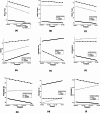Symptom trajectories over time by cannabis use status among patients undergoing cancer treatment
- PMID: 39550373
- PMCID: PMC11569142
- DOI: 10.1038/s41598-024-78501-4
Symptom trajectories over time by cannabis use status among patients undergoing cancer treatment
Abstract
Adults with cancer may perceive cannabis as beneficial for managing their cancer-related symptoms, but the evidence supporting its medical use is varied and inconclusive. This study characterized associations of cannabis use with cancer-related symptom trajectories. Participants were adults undergoing cancer treatment at the Stephenson Cancer Center (SCC; n = 218) in Oklahoma; they were 71% female, 10% minoritized race, and 45% had stage III or IV cancer. Participants completed surveys at baseline and 2-, 4-, and 6-months post-baseline. Assessments queried about cannabis use behavior, physical and psychological distress via the Rotterdam Symptoms Checklist (RSCL), respiratory symptoms via the American Thoracic Society Questionnaire (ATSQ), and quality of life indices (physical and social functioning, pain interference, sleep quality, fatigue) via the Patient Reported Outcomes Measurement Information System (PROMIS-29). Cannabis use status was categorized based on self-reported past 30-day cannabis use at each assessment as non-use [no use at any assessment], occasional-use [use at 1-2 assessments], or consistent-use [use at 3-4 assessments]. Longitudinal hierarchical linear modeling evaluated associations of cannabis use status with average symptoms and symptom trajectories across all four assessments. One-third (33%) of participants reported past 30-day cannabis use at ≥ 1 assessment. Participants who reported cannabis use (occasional-use and consistent-use) had more severe symptoms overall across assessments. While most cancer symptom trajectories did not differ by cannabis use status, participants who reported consistent cannabis use uniquely showed worsening physical function over time. Cannabis use was associated with greater cancer-related symptom severity over time.
Keywords: Cancer; Cannabis; Pain; Physical functioning; Sleep disturbance.
© 2024. The Author(s).
Conflict of interest statement
Figures

References
MeSH terms
Grants and funding
LinkOut - more resources
Full Text Sources
Medical
Research Materials
Miscellaneous

